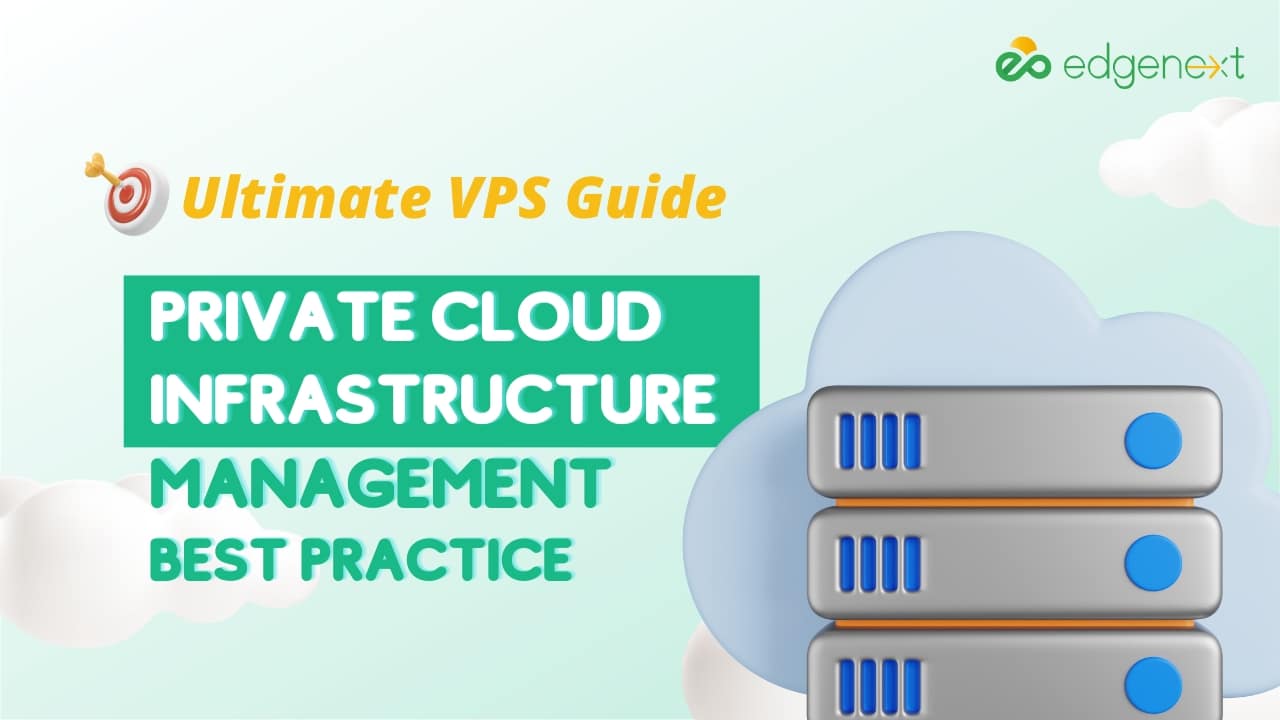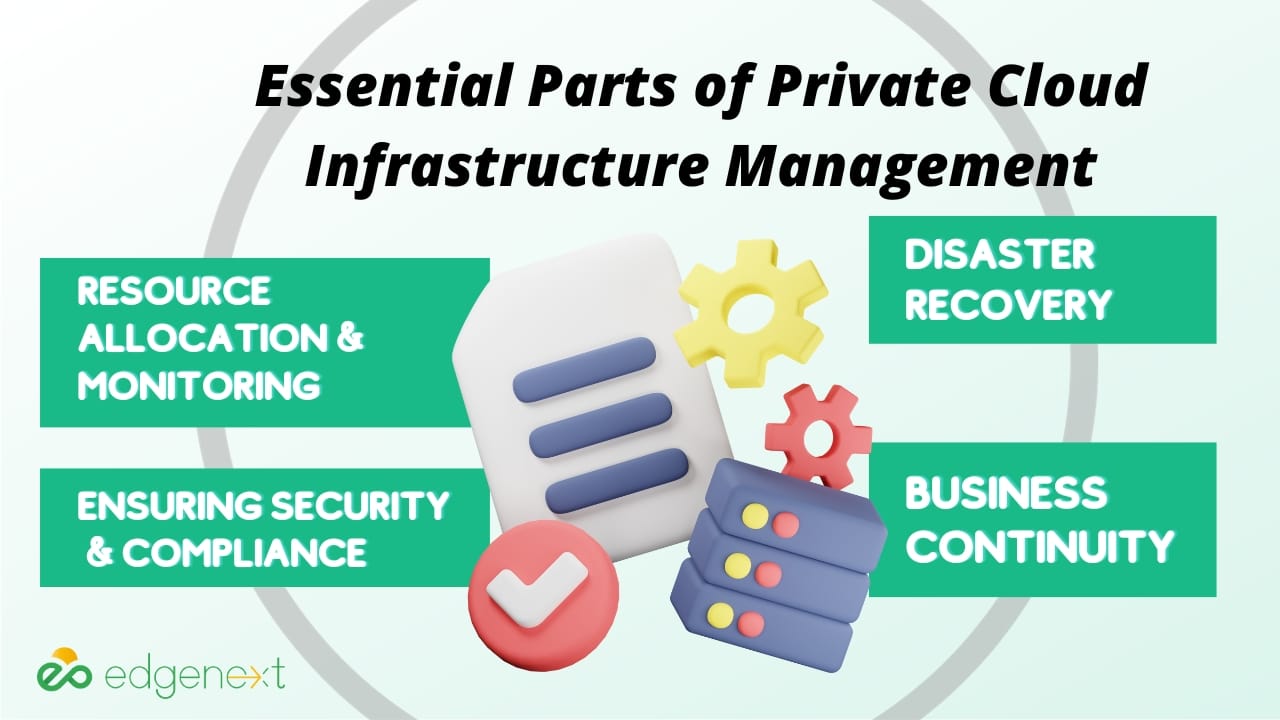
Private cloud infrastructure is a form of cloud computing that enables organizations to store and manage their data and applications on private, dedicated servers. Private clouds provide greater control over resources, cost-effectiveness, security options, and flexibility than public clouds. However, for organizations to make the most out of their private clouds, they must practice proper private cloud infrastructure management best practices. This post will overview private cloud infrastructure management best practices for optimal performance and efficiency.
Organizations must consider several key factors to ensure optimal performance and efficiency when designing a robust private cloud infrastructure. First, the infrastructure should be designed with scalability and flexibility in mind. This means the organization should have an architecture that can easily accommodate additional resources or workload changes. Second, high availability and fault tolerance should be built into the infrastructure to ensure that applications and services remain up and running even during an outage or other disruption. Third, organizations should consider their network and storage architecture to ensure data flows efficiently across the private cloud environment. Finally, security and compliance requirements must be considered when designing a private cloud, as this will determine what data and applications can be stored and used on the infrastructure.
By addressing these considerations when designing a private cloud infrastructure, organizations can lay the foundation for effectively managing their resources. This will enable them to optimize their performance and efficiency, ultimately helping them get the most out of their private clouds.

When it comes to private cloud infrastructure management, automation is critical. Automating the provisioning and deployment of resources can help streamline the process and reduce manual intervention. This can improve resource utilization and efficiency as organizations can quickly deploy new applications or services without manually configuring each one. Automation tools and frameworks also make managing and monitoring cloud resources easier, enabling organizations to quickly identify root issues and take action when necessary.
Organizations can significantly reduce the time and effort spent managing their private clouds by leveraging automation tools and frameworks. This, in turn, allows them to focus more on optimizing performance and efficiency while reducing the risk of errors due to manual intervention. Automation can help organizations ensure their private cloud infrastructure runs smoothly and efficiently, making it easier to get the most out of their cloud investments.
Resource allocation and monitoring are essential parts of private cloud infrastructure management. It ensures that resources are used optimally to avoid bottlenecks and performance issues. Furthermore, it helps organizations to plan for future capacity needs based on usage patterns and growth projections. Organizations should implement the best resource allocation and monitoring practices to manage their private clouds effectively.
Monitoring tools are one such best practice, as they can help organizations quickly identify and locate performance issues. Additionally, establishing performance baselines helps organizations understand what “normal” resource usage looks like so they can take action when necessary. Finally, organizations should also be aware of the cost implications of their resource allocation decisions to ensure they are not overspending on resources that they don’t need.
By following these best practices, organizations can ensure their private cloud infrastructure is managed correctly and they get the most out of their investments. This, in turn, helps them optimize their performance and efficiency while avoiding costly mistakes. Organizations can ensure their private cloud infrastructure runs smoothly and efficiently with proper resource allocation and monitoring setup.

Ensuring security and compliance is a critical aspect of private cloud infrastructure management. Private clouds are typically used to host sensitive data and applications, so organizations must take the necessary steps to protect their networks from unauthorized access. This includes implementing robust access controls and user authentication mechanisms, encrypting data in transit and at rest, regularly patching and updating software and hardware components, and complying with industry regulations and standards.
Organizations should also conduct regular security audits and vulnerability assessments to secure their private clouds. These assessments help identify any weak points in the infrastructure that hackers or other malicious actors could exploit. Furthermore, they can reveal potential compliance issues that need to be addressed.
Ultimately, organizations must ensure their security and compliance processes are up-to-date and effective to protect their private cloud infrastructure from potential threats. By taking the necessary steps to ensure security and compliance, organizations can minimize the risk of unauthorized access or data leakage while still getting the most out of their private clouds.
Organizations must also implement effective disaster recovery and business continuity strategies when managing their private cloud infrastructure. This includes regularly backing up data and testing backup and restore procedures, implementing redundant systems and failover mechanisms, developing and testing disaster recovery plans, and ensuring geographic redundancy and off-site data replication.
By following these best practices, organizations can protect their data and applications during a disaster or other disruption. This is particularly important for organizations that rely heavily on their private cloud infrastructure, as downtime could seriously affect business operations and customer satisfaction.
Furthermore, having effective disaster recovery measures in place can also help minimize the financial impact of any unplanned downtime. By investing in reliable backup solutions and redundant systems, organizations can reduce the costs associated with data loss or system failure.
Overall, disaster recovery and business continuity are essential components of private cloud infrastructure management that must not be overlooked. Organizations should take the necessary steps to ensure their data remains secure and also accessible during a disaster.
Continuous monitoring, optimization, and evaluation are essential for private cloud infrastructure management. This includes proactively identifying and addressing performance bottlenecks and capacity issues, optimizing resource utilization and cost efficiency, and regularly reviewing the effectiveness of management practices to ensure they are effective.
By continuously monitoring their private clouds, organizations can identify and address potential issues before they become more serious problems. This can help prevent costly downtime and ensure the cloud infrastructure is always running efficiently.
Furthermore, organizations should also focus on optimizing their resource utilization to maximize cost efficiency. Organizations can better manage their costs by adequately utilizing resources by minimizing waste or over-provisioning resources.
Finally, organizations should also regularly review the effectiveness of their management practices and make necessary adjustments. This allows them to ensure they are using the most effective techniques and strategies for managing their private cloud infrastructure.
Continuous monitoring, optimization, and evaluation are critical components of successful private cloud infrastructure management that should not be overlooked. Organizations can maximize their availability and minimize associated costs by ensuring their private cloud operates efficiently and effectively.
In summary, private cloud infrastructure management practices can play an instrumental role in helping organizations optimize their operations. Organizations can ensure their applications remain reliable, scalable, and performant by implementing best practices such as continuous monitoring, optimization, and evaluation. This will also help reduce operational costs and downtime by proactively addressing potential issues before they become more serious problems. Additionally, organizations should invest in disaster recovery and business continuity measures to minimize unplanned downtime’s financial impact.
Overall, private cloud infrastructure management is essential to running a successful business in today’s digital world. Organizations can maximize their operational efficiency and minimize associated costs by taking the necessary steps to ensure their applications remain up-to-date and reliable. With the right strategies, organizations can ensure their data remains secure and easily accessible during a disaster. Proper private cloud infrastructure management is essential for organizations looking to stay competitive in today’s digital landscape.
Contact EdgeNext Cloud Expert to build your best private cloud strategy today!
© 2025 EdgeNext Copyright All Right Reserved